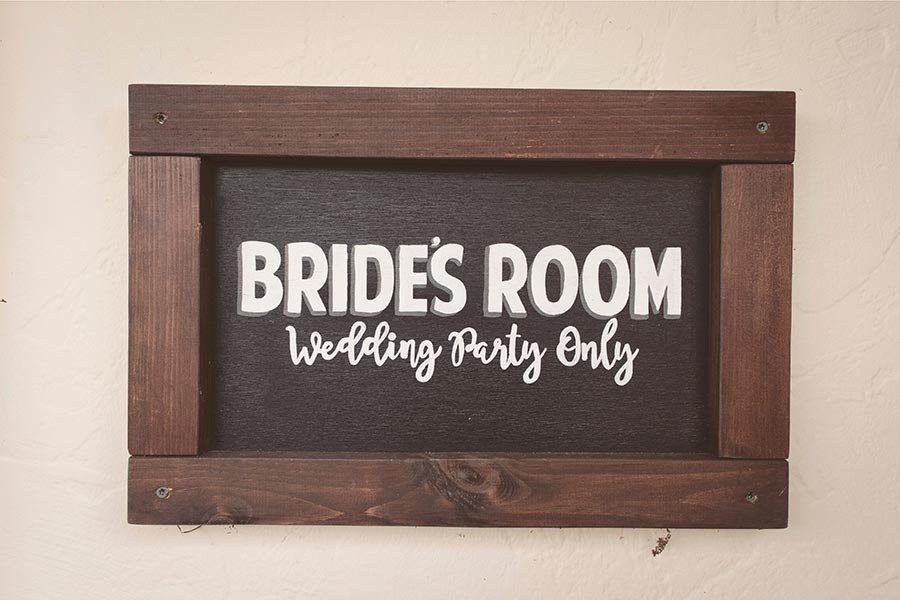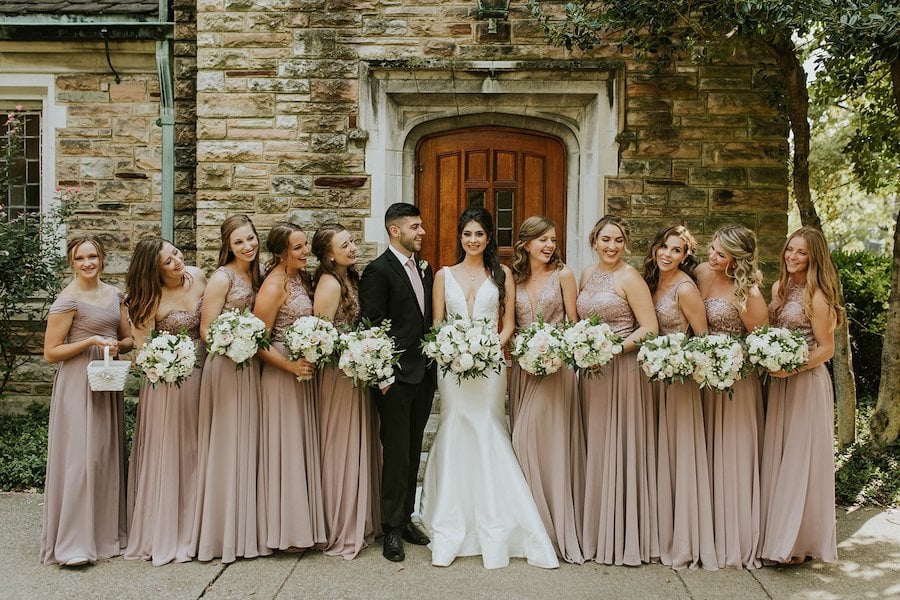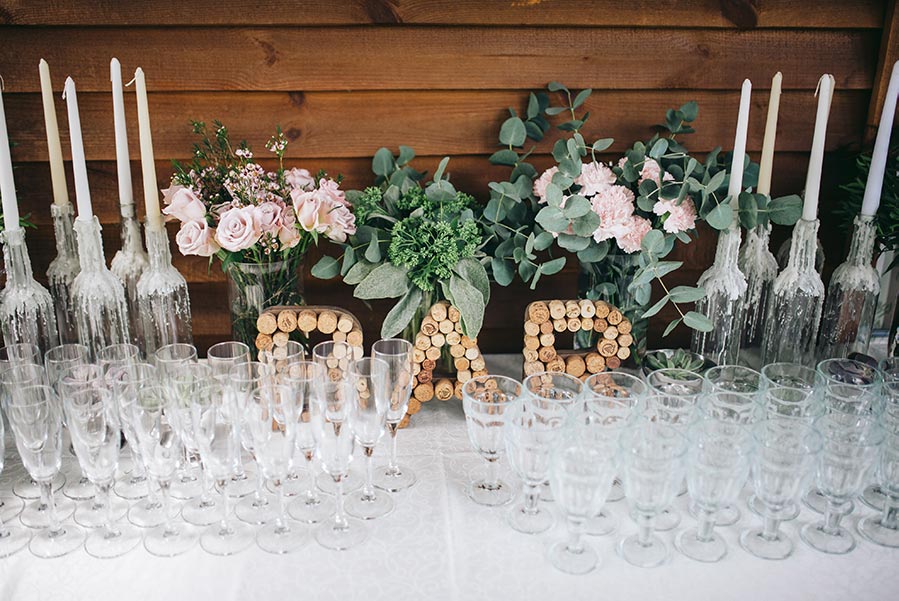Everything You Need to Know About Bustling
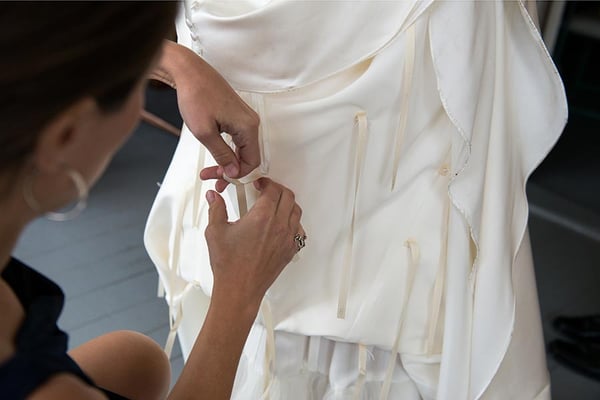
Bustling a wedding dress means to secure the extra fabric from the bottom of your gown to prevent it from dragging on the ground. This involves hooking the ends of your dress onto the inside or outside of your skirt so that it is folded and out of the way. The bustle clips are added during the alterations process, but the type of bustle is up to you! If you’re not sure which bustle to choose, or whether or not you even need one, we’re here to help! Check out all of the bustling basics below to get started:
How much does bustling your wedding dress cost?
The cost of bustling your gown will depend on how many bustle points you need. Predictably, simple bustles are more affordable, but if you have a more intricate bustle it will be at a higher price point. On average, bustles range between $75 and $250. Your alterations specialist will be able to help you determine the price point for your personal bustle.
How do you keep your wedding gown bustled?
You will most likely need someone to assist you in bustling your gown, as it will be extremely difficult for you to locate and reach the hook points. The person assisting you will need to find the hooks located along the train of your gown and match them up with the coordinating hooks placed along your skirt. They will then fasten each hook to its sister, securing the bottom of the gown to the skirt. Ensuring that each hook is properly fitted will result in a bustle that stays up all night long.
Bustles can be complicated! Choose a designated person to help you with your bustle prior to the reception. Choosing someone like a bridesmaid or your mom will guarantee that this guest is not preoccupied with other things during the reception. Have them practice bustling your gown ahead of the wedding day to ensure that there is a seamless transition once the train needs to go up prior to the reception.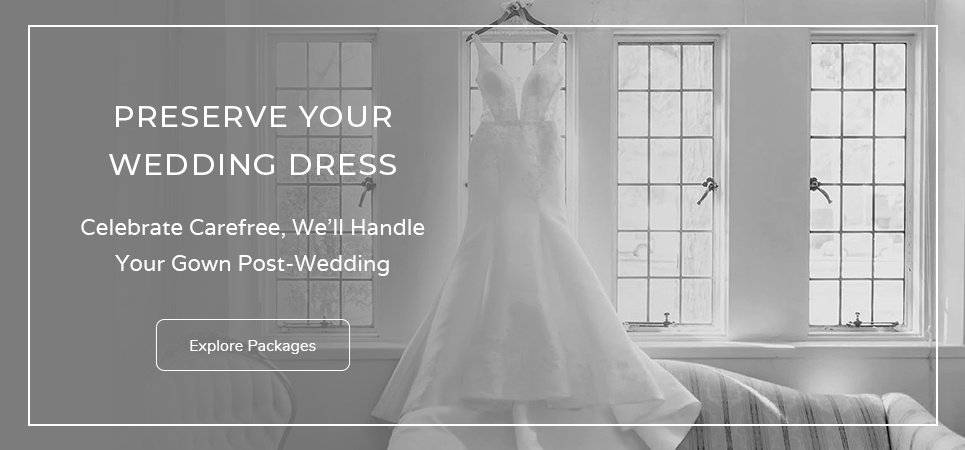
Why do you need a bustle?
Bustles keep your gown from dragging on the floor, specifically at your reception. This will allow you to move freely throughout the night without worrying about your dress being stepped on or dragged through dirt. Preventing the bottom of your gown from being completely destroyed at the reception will help considerably during the cleaning process when you have your gown preserved. Bustling is extra important for brides with cathedral length trains that will be a hinderance during dinner and dancing.
What are the different types of bustles?
Traditionally, there are three main types of bustles, and the best option for you will vary based on your gown.
American (Over Bustle)
In the American bustle, the train is gathered up and fastened over top of the skirt. This results in the bustle starting at the middle and cascading down the back of the gown. This bustle type is particularly well suited for ball gowns or wedding dresses with cathedral length trains.
French (Under Bustle)
The French bustle involves the train being tucked underneath the skirt to create a billowing effect. This will give the back of your gown more fullness, since the extra material will be placed inside the skirt. This bustle is great for A-line, sheath, mermaid, and trumpet gowns.
Royal (Victorian Bustle)
This elaborate bustle is hooked down the back of the dress at several different points. This creates a series of dramatic folds down the back of the dress. This bustle is best for large ball gowns, or wedding dresses with enough excess fabric to handle the plentiful bustling points.

